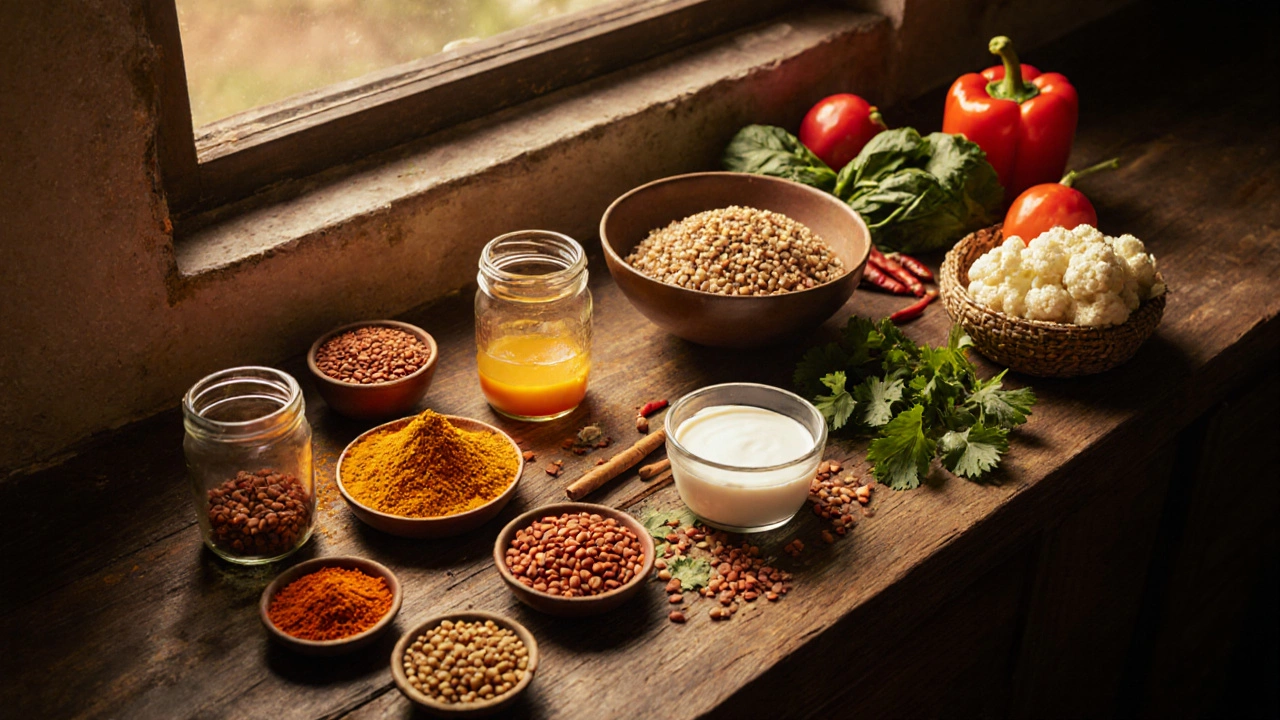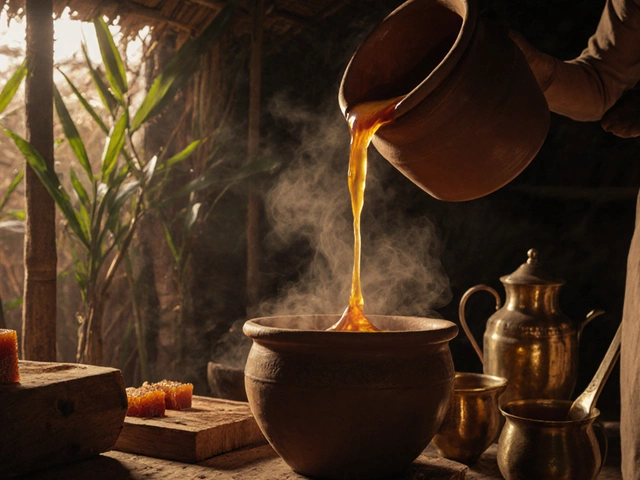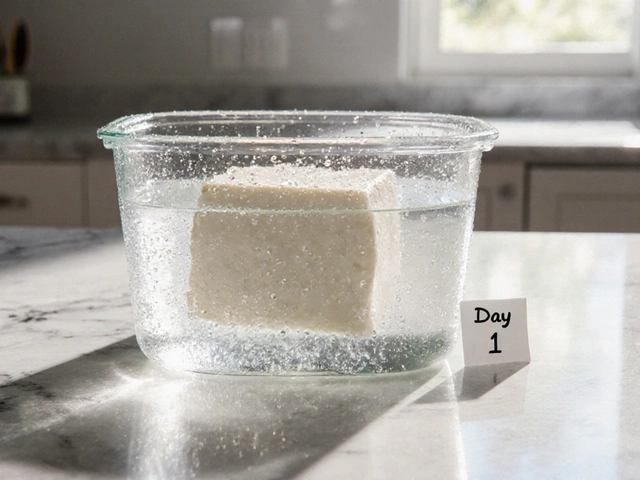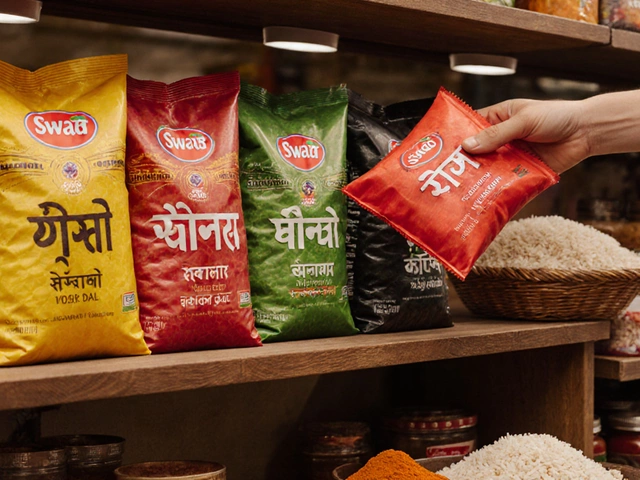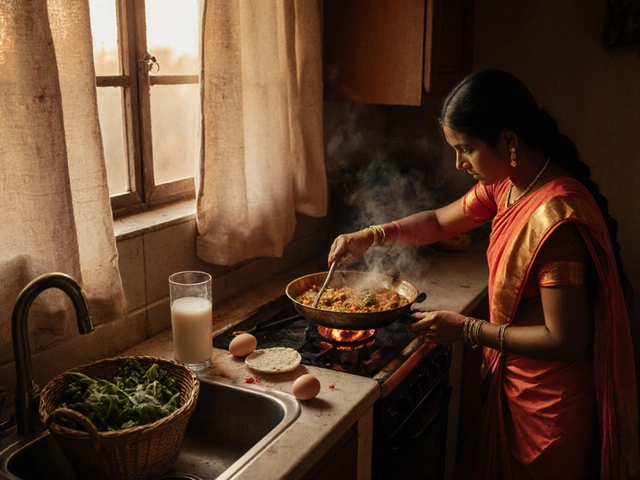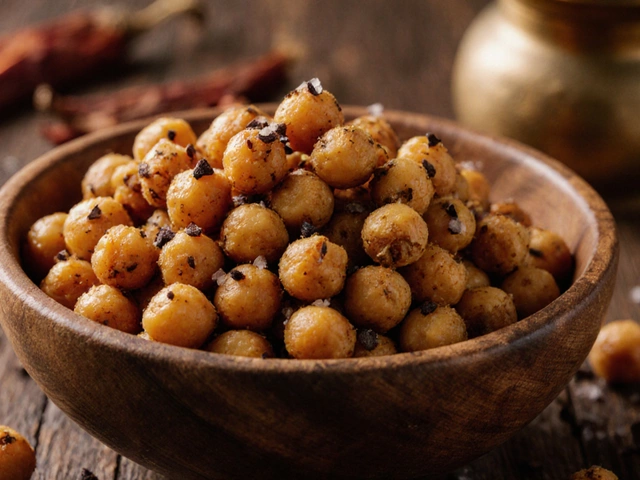Indian Dish Nutrition Calculator
Calculate Your Dish
Health Tip: Use less oil and add more vegetables for a healthier version
When you think of Indian food, you probably picture rich curries, sizzling tandoori dishes, or sweet gulab jamun. But is all that flavor also a ticket to better health? Indian food is a diverse cuisine that blends spices, legumes, vegetables, and grains, offering a mix of calories, protein, fiber, and antioxidants. Let’s break down what makes it tick, separate myth from fact, and see how you can enjoy it without overdoing the oil.
Key Takeaways
- Traditional Indian ingredients like lentils, chickpeas, turmeric, and yogurt are nutrient powerhouses.
- Cooking methods matter - grilling, steaming, and using minimal oil keep dishes light.
- Portion control and balancing carbs with protein and veggies prevent excess calories.
- Many popular Indian dishes can be tweaked for a healthier profile in under 30 minutes.
- Understanding the nutrient breakdown helps you enjoy Indian flavors without guilt.
Indian food health benefits are often hidden behind the spice rack. Below we unpack the science behind the most common components.
Spice Up Your Health: The Star Players
Spices aren’t just for flavor; they bring measurable health perks.
Turmeric is a bright yellow root that contains curcumin, a compound shown to reduce inflammation and support joint health. A teaspoon a day can lower C‑reactive protein levels, according to a 2023 meta‑analysis of 12 clinical trials.
Ghee is clarified butter rich in short‑chain fatty acids and fat‑soluble vitamins A, D, E, and K. When used sparingly (½tsp per serving), it supplies energy without the lactose found in regular butter.
Yogurt (preferably plain, low‑fat) adds probiotic bacteria that aid digestion and boost immunity. A cup of Indian‑style raita can provide 10g of protein and 5g of calcium.
Legumes: The Protein Powerhouses
Most Indian meals revolve around beans and lentils, which deliver plant‑based protein, fiber, and essential minerals.
Lentils (masoor, toor, moong) contain about 18g of protein and 15g of fiber per cooked cup. Their low glycemic index means they release glucose slowly, keeping blood sugar stable.
Chickpeas (garbanzo beans) pack 15g of protein and 12g of fiber per cup, plus iron and folate-key for vegans and pregnant women.
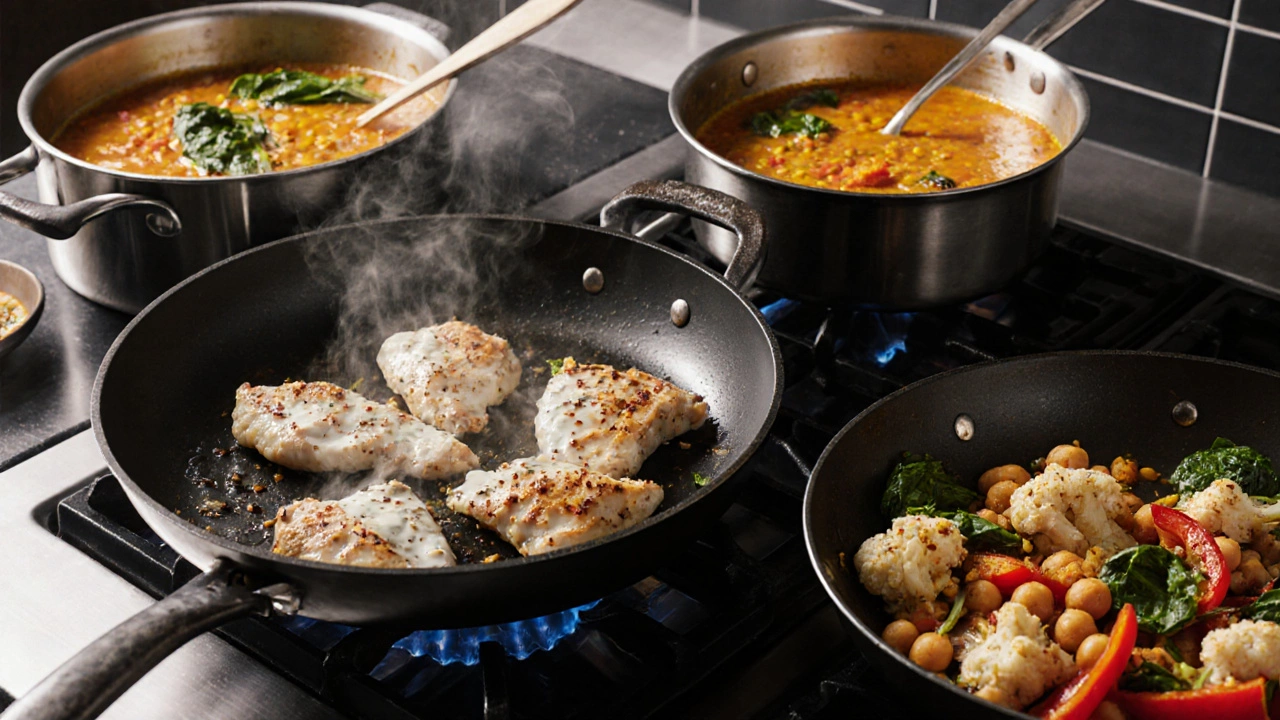
Balancing Carbs and Fats: The Portion Playbook
Rice and flatbreads are staples, but the trick is to pair them with enough protein and veggies.
- Swap white basmati for brown basmati or millet for extra fiber.
- Limit naan to one small piece; opt for whole‑wheat roti instead.
- Use a ½‑cup serving of cooked rice (≈150kcal) as a base, then layer on at least ¾ cup of vegetables and ½ cup of dal or chickpea curry.
Healthier Cooking Techniques
Traditional tandoori ovens and stovetop woks can be adapted for lower‑fat outcomes.
- Grilling: Marinate chicken, paneer, or tofu in yogurt‑spice mixes, then grill on a barbecue or indoor grill pan. The high heat seals in moisture, needing only a drizzle of oil.
- Steaming: Steamed idli, dhokla, and vegetable dumplings retain nutrients while keeping calories low.
- Sautéing with minimal oil: Use a non‑stick pan, a spray of canola oil, and finish with a splash of water to prevent sticking.
- Pressure cooking: Dal and beans cook faster, preserving antioxidants that would degrade with prolonged boiling.
Quick, Healthy Indian Recipes You Can Make Tonight
All three recipes stay under 500kcal per serving and need 30minutes or less.
1. Spicy Lentil Soup (Masoor Dal Shorba)
- Ingredients: 1cup red lentils, 1tsp turmeric, 1tsp cumin, 2cups low‑sodium vegetable broth, 1tbsp olive oil, chopped spinach.
- Steps:
- Rinse lentils, then simmer in broth with turmeric and cumin for 15minutes.
- Add spinach, cook 2minutes, then blend half for a creamy texture.
- Finish with a drizzle of olive oil and fresh cilantro.
Nutrition: ~260kcal, 18g protein, 9g fiber.
2. Chickpea & Veggie Stir‑Fry (Chana Sabzi)
- Ingredients: 1cup canned chickpeas (rinsed), 1red bell pepper, 1cup cauliflower florets, 1tsp mustard seeds, ½tsp garam masala, 1tbsp mustard oil (optional).
- Steps:
- Heat a non‑stick pan, add mustard seeds until they pop.
- Add veggies, stir‑fry 5minutes.
- Stir in chickpeas, garam masala, and a splash of water; cook 3minutes.
Nutrition: ~320kcal, 12g protein, 11g fiber.
3. Yogurt‑Marinated Grilled Tandoori Chicken
- Ingredients: 200g skinless chicken breast, ½cup low‑fat Greek yogurt, 1tsp paprika, ½tsp cumin, ¼tsp chili powder, lemon juice.
- Steps:
- Mix yogurt with spices and lemon; coat chicken, refrigerate 30minutes.
- Pre‑heat grill or grill pan; cook 6minutes each side.
- Serve with a side salad of cucumber, tomato, and a squeeze of lime.
Nutrition: ~380kcal, 35g protein, minimal carbs.
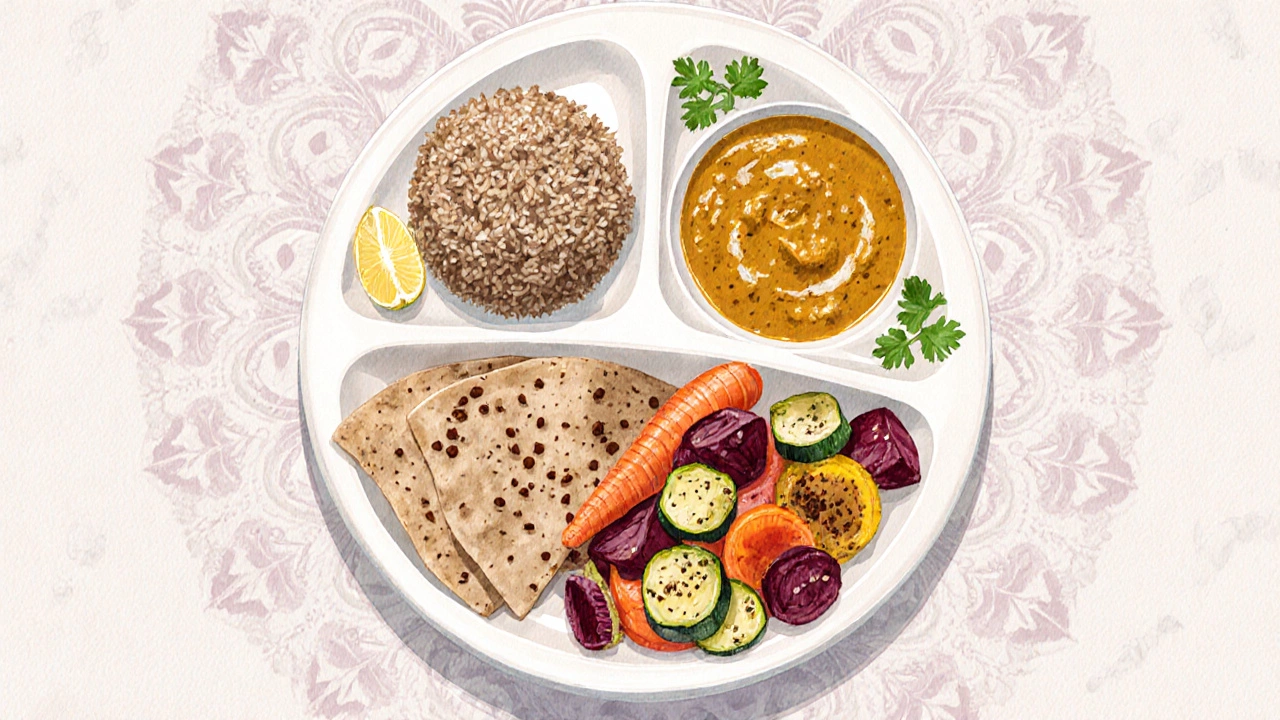
Nutrition Comparison: Typical Indian Dish vs. Health‑Focused Version
| Dish | Calories | Protein (g) | Carbs (g) | Fat (g) | Key Health Twist |
|---|---|---|---|---|---|
| Butter Chicken (restaurant) | 620 | 32 | 45 | 30 | Heavy cream sauce, butter |
| Grilled Tandoori Chicken (recipe above) | 380 | 35 | 5 | 8 | Yogurt‑marinade, no cream |
| Paneer Butter Masala (standard) | 540 | 22 | 30 | 36 | Butter, cream |
| Paneer Tikka with Veggies | 290 | 24 | 12 | 12 | Grilled, less oil |
Checklist: Making Your Indian Meals Healthier
- Choose whole‑grain rice or millet over polished white rice.
- Limit oil to 1‑2 teaspoons per dish; use sprays or non‑stick cookware.
- Load up on legumes, beans, and lentils for protein and fiber.
- Include a colorful veggie side in every meal.
- Prefer yogurt‑based sauces to cream‑heavy gravies.
- Control portion size: ½ cup carbs, ½ cup protein, 1 cup veggies.
- Finish with a pinch of fresh herbs or a squeeze of lemon for flavor without salt.
Frequently Asked Questions
Is Indian food inherently unhealthy?
Not at all. Traditional Indian cooking leans on plant‑based proteins, spices with antioxidant properties, and cooking methods like grilling or steaming. The health impact depends on oil usage, portion size, and the balance of carbs versus protein and fiber.
How much oil should I use in a typical Indian curry?
Aim for 1‑2 teaspoons (5‑10ml) per 4‑serving batch. Using a non‑stick pan, a spray bottle, or substituting part of the oil with water or broth can keep the dish flavorful while cutting calories.
Can I enjoy naan while keeping my diet low‑calorie?
Choose whole‑wheat or oat‑flour naan, limit each piece to about 30g, and pair it with a hearty vegetable or lentil side. Even better, swap naan for a lettuce wrap or cauliflower ‘flatbread’ in a stir‑fry.
Do Indian spices increase the caloric content?
Spices add virtually no calories-just flavor and bioactive compounds. That’s why a pinch of turmeric or cumin can make a bland dish exciting without adding energy.
What’s the best way to control blood sugar when eating rice?
Pair rice with high‑fiber dal or beans, add a protein source (paneer, chicken, tofu), and include non‑starchy veggies. Also, let cooked rice cool for 30minutes; the resistant starch that forms slows glucose absorption.
